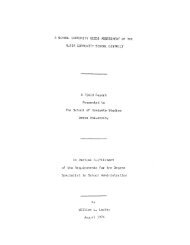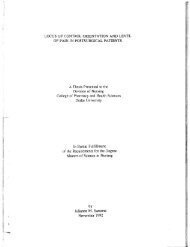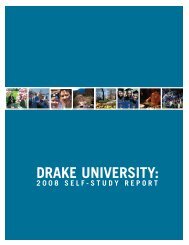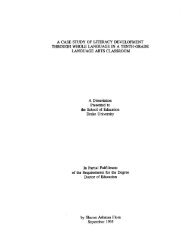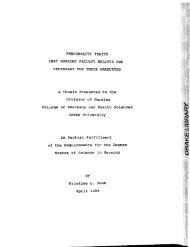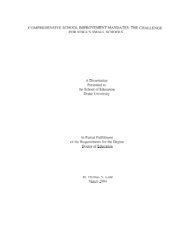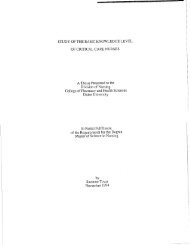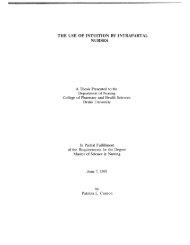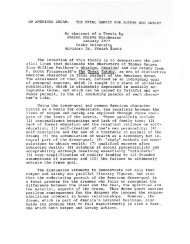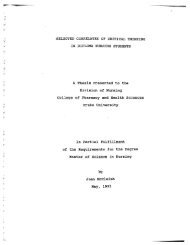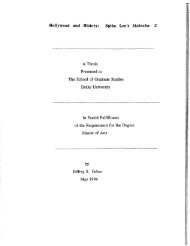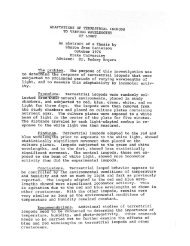LEADERSHIP CHARACTERISTICS OF ... - Drake University
LEADERSHIP CHARACTERISTICS OF ... - Drake University
LEADERSHIP CHARACTERISTICS OF ... - Drake University
You also want an ePaper? Increase the reach of your titles
YUMPU automatically turns print PDFs into web optimized ePapers that Google loves.
from .I 0 -21 on a 5.0 Likert scale. These results, while statistically<br />
significant, do not represent a practical difference between male and<br />
female CEOs.<br />
A similar statistical analysis was run to determine the gender<br />
differences associated with the outcome measures of rater extra effort,<br />
satisfaction, and perceived effectiveness of the CEO. The results<br />
reflected in Table 17 indicate that when all raters' responses were<br />
combined satisfaction (p = ,013, c.05) was significantly associated with<br />
female CEOs; while extra effort (p = .094, c.05) and effectiveness<br />
(p = .055, c.05) were not statistically associated with either gender. Once<br />
again, while statistically significant, there is little practical significance to<br />
the differences between gender and rater perception of CEO outcomes.<br />
Table 16<br />
Gender Differences Related to Leadership Styles<br />
Gender 1\11 Mean Std. Std. Error<br />
Deviation Mean df f<br />
-<br />
P<br />
--<br />
Transformational<br />
Leadership Female 14 3.3921 22959 .06136 44.83 2.356 .023<br />
Male 47 3.1 774 .46188 .06737<br />
Transactional<br />
Leadership Female 14 2.5306 .36056 .Q9636 21.88 1.184 .I 32<br />
Male 47 2.3578 .37115 0541 3<br />
Passive-Avoidant<br />
Leadership Female 14 .7658 .58702 15689 21.45 -1.131 .270<br />
Male 47 .9683 ,58998 ,08605



